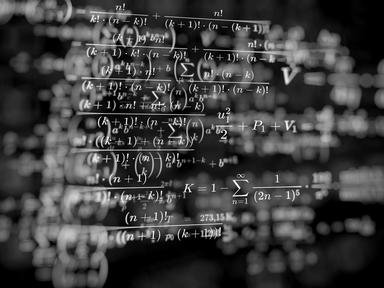Quiz Answer Key and Fun Facts
1. It is not possible for a set to be both open and closed.
2. If you flip a fair coin 100 times, the probability that you get exactly 50 heads and 50 tails is 25%.
3. If you are given a fixed amount of fencing material and asked to build a fence that contains the largest area, you should build a square fence.
4. You are given a function f and told that for all x, t, |f(x)-f(t)| ≤ (x-t)²
You can deduce that f(x) is a parabola.
5. If a and b are irrational, then ab is also irrational.
6. You are walking in a straight line to a destination. First, you walk 1/2 of the distance to your destination. Then, you walk 1/3 of the remaining distance. Then you walk 1/4 of the remaining distance. And you repeat this process infinitely many times. You will never reach your destination.
7. The function f(z) = ez, where z is a complex number, has a range of (-∞, ∞). In other words, for every value y between -∞ and ∞, there exists z such that ez=y.
8. You may have learned in a calculus class that ∫0∞e-x2dx = √(π)/2. Replace the 2 with n and take the limit as n goes to infinity.
This integral now equals π/2.
9. Some definitions:
tr(A) is the trace and equals the sum of the diagonal entries of the matrix A.
det(A) is the determinant of the matrix A.
The eigenvalues of a 2x2 matrix A can be found by solving the equation x2 - det(A)x + tr(A) = 0 for x.
10. As you are exploring Math Utopia, you come across a complex function that is differentiable everywhere. Further analysis of this function reveals that it is bounded, in other words, there exists M such that |f(z)| < M for all z.
You can conclude that this function is of the form Acos(z)+Bsin(z), where A and B are constants.
Source: Author
redsoxfan325
This quiz was reviewed by FunTrivia editor
crisw before going online.
Any errors found in FunTrivia content are routinely corrected through our feedback system.
